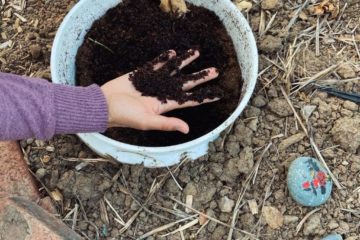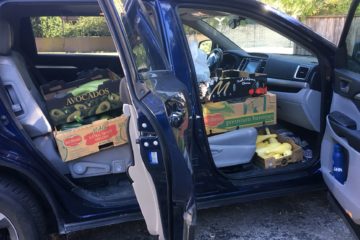Written by Nicole Shimizu, Communications and Outreach Coordinator
With climate change becoming an increasingly relevant issue, community gardens and urban agriculture offer an opportunity for communities to create more uniquely sustainable ways of utilizing land and growing food. While community gardens alone should not be the only response to climate change, they offer a unique and accessible way to get involved in addressing climate change on the individual and community level. Sustainability broadly means to meet the needs of the present without compromising the ability of future generations to meet their needs. By caring about sustainability, communities signal that they care about the earth and future generations. Sustainability can be understood through three distinct lenses: environmental, social, and economic; however, for the scope and specificity of this paper, the focus will be environmental sustainability. Community gardening offers sustainability through the introduction of native plants which reduce water use intensity, the number of non-native plant species, the use of pesticides and fertilizers, the urban heat island effect, plastic waste, and food miles among many other benefits. All of these reductions make community gardening a sustainable practice that communities should consider adopting. By making this type of land use more common, community gardening and urban agriculture can be a feasible and beneficial addition to the community’s multifaceted response to climate change.
Community gardens have the potential to be a sustainable land use through the replacement of lawns with native and adaptive plants. Native plants offer many benefits to the environment which make them a sustainable and viable alternative to conventional lawns. According to the Environmental Protection Agency (EPA), native plants provide shelter and food for wildlife such as native birds, bees, butterflies, and other wildlife by providing diverse habitats and food sources compared to a monoculture of manicured lawns. They also provide an opportunity for an increase in biodiversity as multiple native plant populations are reestablished in a garden as compared to a lawn of a single grass species. Finally, native plants require less water because they have adapted to the climate of the region and are drought tolerant (“Green Landscaping: Greenacres”). The impact that native plants can have on sustainability efforts is astounding when compared to the resources necessary for lawn maintenance. To put this into perspective, “lawns consume nearly 3 trillion gallons of water a year, 200 million gallons of gas [for mowing], and 70 million pounds of pesticides” (Talbot, 2016). Lawns fail to provide a healthy and diverse habitat for pollinators, plants, and animals in addition to creating a significant environmental impact which serves to further highlight the costs associated with lawns. Replacing lawns with native and adaptive plants results in an increase of biodiversity and a reduction in water use, pesticide use, and carbon emissions associated with mowing.
Community gardens can also contribute to the reduction of the heat island effect. The heat island effect describes “built up areas that are hotter than nearby rural areas…[they] can affect communities by increasing summertime peak energy demand, air conditioning costs, air pollution and greenhouse gas emissions, heat-related illnesses and mortality, and water pollution” (“Heat Islands”). The heat island effect can be mitigated through the introduction of vegetation and trees which lower surface and air temperatures through evapotranspiration (“Heat Islands”). Community gardens offer a substantial amount of vegetation which would contribute to the mitigation of the heat island effect. This would offer significant direct benefits to the community due to a reduction in human discomfort from heat. It would additionally offer indirect benefits through a reduction in the community’s greenhouse gas emissions because of less air conditioning use and reduce the amount of heat-related illness and mortality.
Along with resource sustainability, community gardens offer several other sustainability opportunities. With community gardens, there is ample opportunity to reduce the waste and carbon emissions associated with the conventional consumption of produce from the grocery store, namely through the reduction of plastic waste and food miles traveled. In a conventional grocery store, single-use plastic is used to ensure product freshness and customer convenience. This is a problem since most of this plastic is hard to recycle; the fact that only 9% of the plastic ever produced has been recycled is a testament to the challenges that come along with recycling plastic (Parker, 2018). With community gardens, there is no need for single-use plastic to individually wrap produce for distribution which greatly reduces plastic consumption. In addition, growing local, seasonal foods has less of an environmental impact because of the exclusion of greenhouse gas emissions associated with greenhouse operations or carbon emissions from long distance travel. Conventional produce travel almost 1,500 miles from farm to store which is up to 92 times farther than the miles that local produce averages to reach the consumer (Pirog and Benjamin, 2003). By growing food within communities and distributing it locally, the amount of food miles that produce travels can be drastically reduced.
In conclusion, the introduction of more community gardens has multiple benefits. Community gardens are a great addition to a city or community’s sustainability portfolio and can be an accessible and adaptable action that cities and communities utilize to take initiative on sustainability issues. They offer the possibility of reductions in greenhouse gas emissions, pesticide use, water use, and plastic waste. For all of these reasons, community gardens should be highly emphasized to advance city and community sustainability agendas.
Works Cited
“Green Landscaping: Greenacres.” EPA, Environmental Protection Agency, archive.epa.gov/greenacres/web/html/factsht.html.
“Heat Islands.” EPA, Environmental Protection Agency, 6 Sept. 2019, www.epa.gov/heatislands/heat-island-cooling-strategies.
Parker, Laura. “A Whopping 91% of Plastic Isn’t Recycled.” National Geographic, 20 Dec. 2018, www.nationalgeographic.com/news/2017/07/plastic-produced-recycling-waste-ocean-trash-debris-environment/.
Pirog, Richard S. and Benjamin, Andrew, “Checking the Food Odometer: Comparing Food Miles for Local versus Conventional Produce Sales to Iowa Institutions” (2003). Leopold Center Pubs and Papers. 130. http://lib.dr.iastate.edu/leopold_pubspapers/130
Talbot, Mary Mary Talbot. “More Sustainable (and Beautiful) Alternatives to a Grass Lawn.” NRDC, 27 Sept. 2019, www.nrdc.org/stories/more-sustainable-and-beautiful-alternatives-grass-lawn.



0 Comments